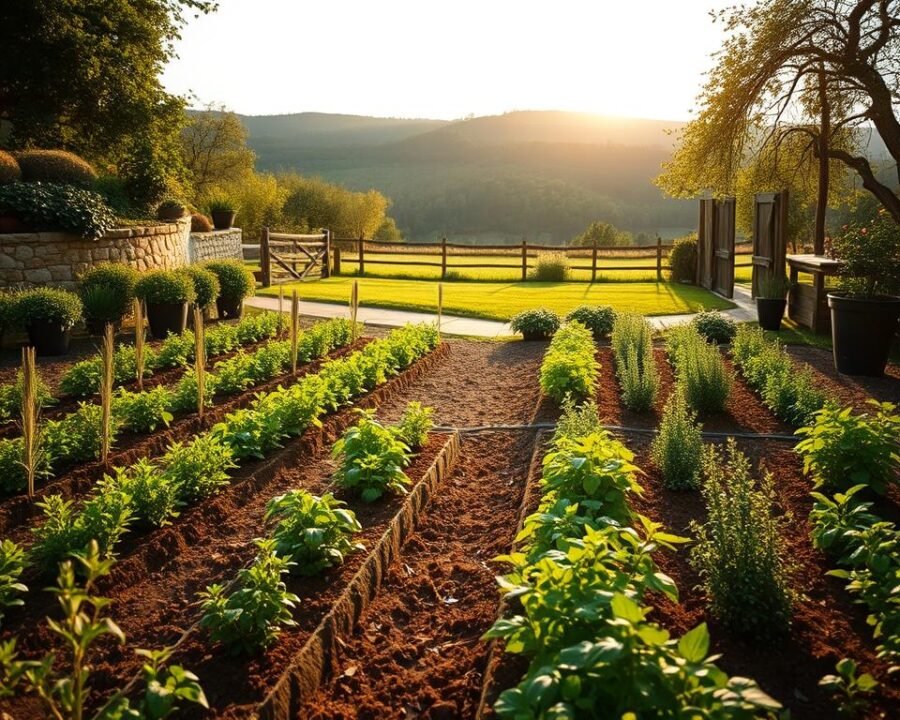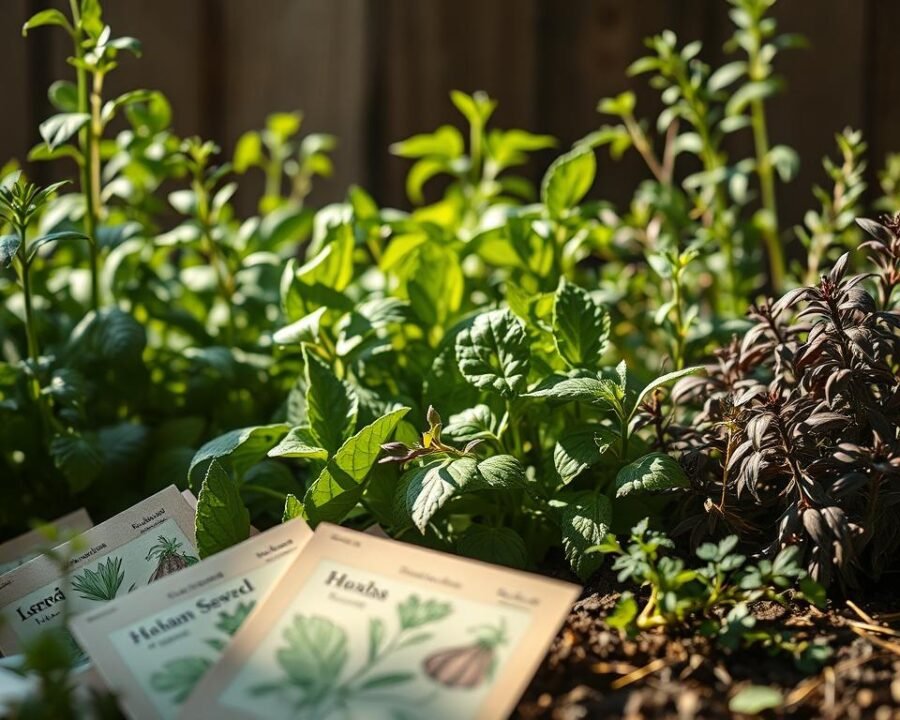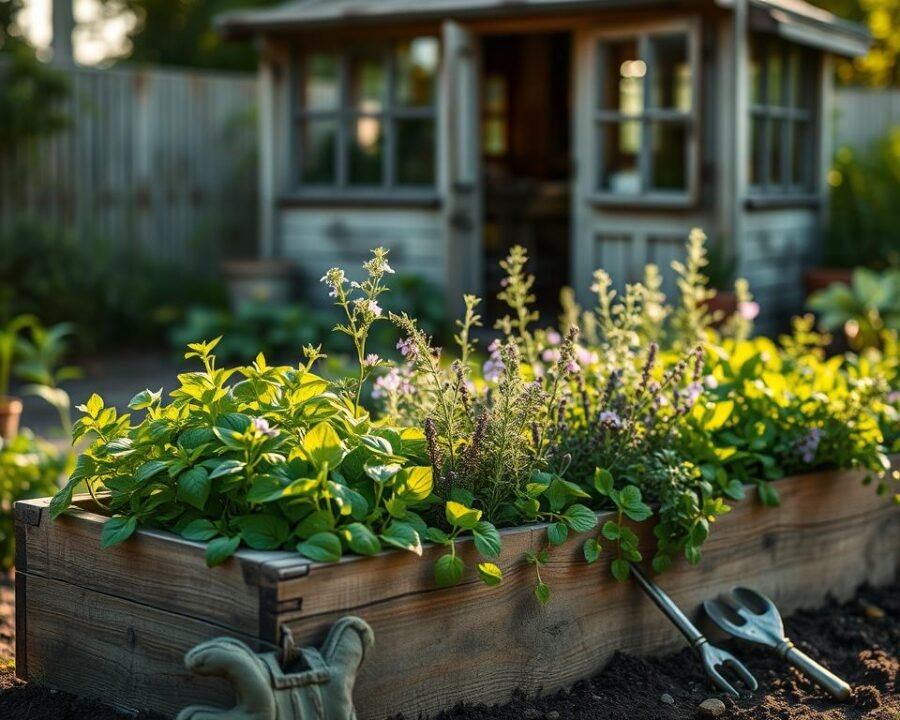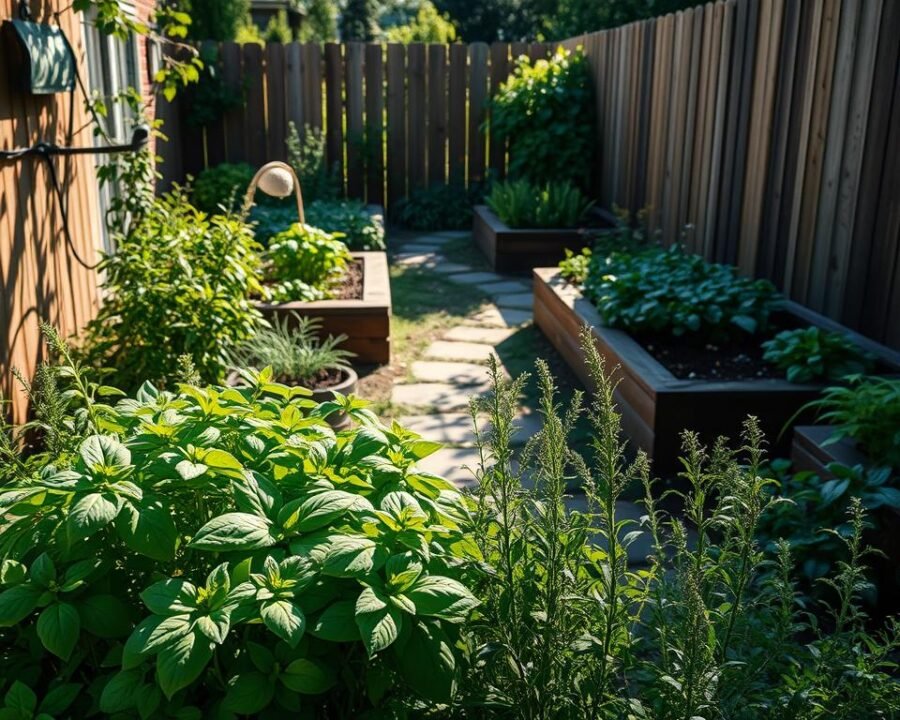Our Guide to the Best How Much Does a Herb Garden Cost You Need to Try
There’s something magical about snipping fresh herbs straight from your own garden. The aroma of basil, the zing of mint, or the earthy warmth of rosemary can transform ordinary meals into culinary masterpieces. More people are discovering that growing their own herbs isn’t just rewarding—it’s surprisingly simple and budget-friendly.
Whether you have a sunny windowsill or a backyard plot, cultivating herbs offers endless benefits. From saving money on grocery-store bundles to adding vibrant greenery to your space, it’s a great way to blend practicality with joy. In this guide, we’ll break down the essentials, drawing from decades of expertise in New England’s thriving gardening community.
Key Takeaways
- Homegrown herbs enhance flavors while cutting grocery expenses.
- Even small spaces can support a thriving herb collection.
- Startup costs are minimal compared to long-term savings.
- Beginner-friendly varieties like basil and thyme require little maintenance.
- Fresh herbs elevate both meals and home aesthetics.
How Much Does a Herb Garden Cost? Breaking Down the Expenses
Starting an herb collection doesn’t have to break the bank. Whether you’re a thrifty DIYer or prefer ready-made solutions, costs vary based on your approach. Let’s explore budget-friendly and premium options to fit any space or wallet.
Budget-Friendly vs. Premium Herb Garden Setups
Recycled containers like mason jars or tin cans cost nothing, while raised bed kits range from $50-$300. Standing planters ($30-$150) offer style, but thrifty gardeners can repurpose old crates or buckets.
Cost of Seeds vs. Starter Plants
Seed packets ($2-$5) save money long-term but require patience. Starter plants ($4-$12) deliver instant gratification. For example, basil grows easily from seed, while rosemary thrives better as a young plant.
Essential Supplies and Their Price Ranges
Every herb gardener needs a few basics:
- Potting mix ($8-$15 per bag)
- Compost ($10-$25 for organic blends)
- Pruning shears ($15-$30 for durable pairs)
Local nurseries often stock healthier plants than big-box stores, though prices run slightly higher. Investing in quality soil upfront ensures robust growth.
Planning Your Herb Garden: Location and Layout
A well-planned herb garden thrives when location and layout align with plant needs. Whether you’re working with a balcony or backyard, understanding sunlight, space, and soil sets the stage for success.

Choosing the Right Spot: Sunlight and Space
Most herbs crave full sun—at least six hours daily. Track how light moves across your space. South-facing areas often work best. No yard? A sunny windowsill or balcony rail can host compact varieties like thyme or chives.
In-Ground, Raised Beds, or Containers?
Each option suits different needs. Here’s a quick comparison:
| Method | Pros | Cons | Cost Range |
|---|---|---|---|
| In-Ground | Low cost, natural drainage | Harder soil control | $0–$50 (amendments) |
| Raised Beds | Better drainage, ergonomic | Higher upfront cost | $80–$200 |
| Containers | Portable, space-efficient | Frequent watering | $10–$150 |
Rosemary loves raised beds for drainage, while mint spreads aggressively—best confined to containers.
Soil Preparation for Healthy Herbs
Herbs despise soggy roots. Mix 30% compost into native soil for nutrients and drainage. A $10 pH test kit ensures optimal acidity (6.0–7.0). Add perlite if soil feels heavy.
Pro Tip: Vertical planters maximize small spaces—perfect for trailing oregano or basil.
Where to Source Your Herbs: Seeds, Cuttings, or Nursery Plants?
Finding quality herbs starts with choosing the right source—seeds, cuttings, or nursery plants. Each method impacts growth time, cost, and success rates. Let’s explore the pros and cons to match your gardening style.

Best Places to Buy Organic, Non-GMO Seeds
For purity and adaptability, trusted brands like Baker Creek and High Mowing offer seeds tested for high germination rates. Key perks:
- Regional fit: Southern Exposure specializes in heat-tolerant basil and thyme.
- Cost-effective: Packets ($3–$6) yield dozens of plants over time.
- Transparency: Look for “non-GMO verified” labels on packaging.
Local Nurseries vs. Big-Box Stores
Local growers often raise herbs with fewer synthetic treatments. Ask staff:
“What natural pest controls do you use?”
Big-box stores may rely on fungicides. Inspect leaves for yellowing or spots before buying.
Propagating Herbs from Cuttings
Multiply fresh herbs for pennies using scissors and water:
- Snip 4-inch stems from rosemary or mint.
- Place in a jar with 1 inch of water.
- Change water every 3 days until roots form (2–6 weeks).
Pro Tip: Oregano roots faster in soil—just keep it moist.
Planting Your Herb Garden: Step-by-Step Guide
Timing and technique make all the difference when growing flavorful herbs. Whether sowing seeds or transplanting seedlings, a few simple steps set the stage for robust growth. Let’s dig into the essentials.

When to Plant: Seasonal Timing for Herbs
Most herbs thrive when planted after the last frost. In New England, aim for late May for basil, while hardy thyme tolerates early spring. Check your USDA zone for precise dates:
- Zone 5b: Parsley and chives in April, basil after Memorial Day.
- Zone 7: Start rosemary outdoors by mid-March.
Perennial herbs like sage return yearly, but tender varieties (e.g., cilantro) prefer cooler summer temps.
How to Plant Seeds and Seedlings
Seeds need depth and space to flourish. Follow these guidelines:
- Press cilantro seeds ¼ inch into soil; dill at ½ inch.
- Space rosemary seedlings 12–18 inches apart for airflow.
- Transplant gently: Loosen roots and keep soil level consistent.
Avoid: Crowding mint—it spreads aggressively. Use separate pots.
Watering and Initial Care Tips
Water deeply 2–3 times weekly instead of light daily sprays. This encourages stronger roots. Self-watering pots or a $15 moisture meter help busy gardeners.
| Issue | Cause | Fix |
|---|---|---|
| Yellow leaves | Overwatering | Let soil dry between sessions |
| Wilting | Underwatering | Soak pots until drainage runs clear |
Pro Tip: Group herbs with similar needs—mediterranean types (rosemary, oregano) love dry full sun, while basil enjoys afternoon shade.
Top 10 Herbs to Grow for Beginners
Growing your own herbs brings fresh flavor to meals and joy to daily routines. These beginner-friendly varieties thrive with minimal effort, offering quick rewards for new gardeners. Let’s explore the easiest options to kickstart your kitchen garden.
Basil: The Versatile Favorite
Sweet basil grows rapidly in warm weather, producing up to ½ pound per plant. Pinch off flower buds to encourage bushier growth and richer flavor. Perfect for:
- Homemade pesto
- Caprese salads
- Infused oils
Try lemon or purple varieties for unique twists on classic recipes.
Chives: Easy and Perennial
These onion-flavored greens return yearly with minimal care. Snip the hollow leaves for:
- Creamy mashed potatoes
- Fresh salads
- Egg dishes
Garlic chives offer a mild alternative with flat, grassy leaves.
Mint: Fast-Growing but Contained
Spearmint and peppermint thrive in containers, where their spreading roots stay controlled. Use for:
- Refreshing teas
- Summer cocktails
- Fruit salads
Warning: Plant mint in pots—it will overtake garden beds.
Other Must-Try Herbs
Expand your collection with these reliable performers:
| Herb | Key Trait | Best Use |
|---|---|---|
| Rosemary | Drought-tolerant | Roasted meats |
| Thyme | Low-growing | Soups & stews |
| Oregano | Spreads quickly | Pizza sauces |
For more varieties, explore our guide on easy herbs to grow.
“Start with three herbs you’ll use weekly. Success with those builds confidence to expand.”
Remember: Annuals like dill complete their cycle in one season, while sage and thyme survive winters in most zones.
Conclusion: Start Your Herb Garden Today!
Growing fresh herbs at home brings joy and savings. With first-year savings averaging $200+, it’s a great way to enhance meals and cut costs. Begin small—three to five varieties in pots—then expand as confidence grows.
Local nurseries offer robust starter plants, while seeds stretch budgets further. For year-round harvests, consider indoor systems like Aerogarden. One gardener transformed a balcony with an old ladder and self-watering pots—proof that creativity trumps space limits.
Preserve excess harvests by freezing basil in oil cubes or drying oregano. Share your progress online—we’d love to see your garden thrive!
Final Tip: Pair herbs with similar needs. Rosemary and thyme love dry soil, while basil thrives with consistent moisture.







